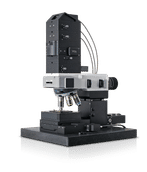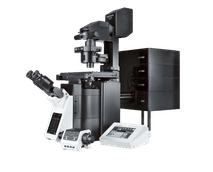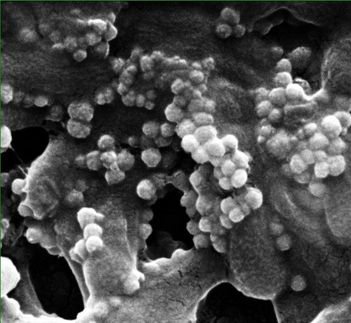Smartphone 'microscope' can detect a single virus
Your smartphone now can see what the naked eye cannot: A single virus and bits of material less than one-thousandth of the width of a human hair.
Aydogan Ozcan, a professor of electrical engineering and bioengineering at the UCLA Henry Samueli School of Engineering and Applied Science, and his team have created a portable smartphone attachment that can be used to perform sophisticated field testing to detect viruses and bacteria without the need for bulky and expensive microscopes and lab equipment. The device weighs less than half a pound.
"This cellphone-based imaging platform could be used for specific and sensitive detection of sub-wavelength objects, including bacteria and viruses and therefore could enable the practice of nanotechnology and biomedical testing in field settings and even in remote and resource-limited environments," Ozcan said. "These results also constitute the first time that single nanoparticles and viruses have been detected using a cellphone-based, field-portable imaging system."
The new research, published in the American Chemical Society's journal ACS Nano, comes on the heels of Ozcan's other recent inventions, including a cellphone camera–enabled sensor for allergens in food products and a smart phone attachment that can conduct common kidney tests.
Capturing clear images of objects as tiny as a single virus or a nanoparticle is difficult because the optical signal strength and contrast are very low for objects that are smaller than the wavelength of light.
In the ACS Nano paper, Ozcan details a fluorescent microscope device fabricated by a 3-D printer that contains a color filter, an external lens and a laser diode. The diode illuminates fluid or solid samples at a steep angle of roughly 75 degrees. This oblique illumination avoids detection of scattered light that would otherwise interfere with the intended fluorescent image.
Using this device, which attaches directly to the camera module on a smartphone, Ozcan's team was able to detect single human cytomegalovirus (HCMV) particles. HCMV is a common virus that can cause birth defects such as deafness and brain damage and can hasten the death of adults who have received organ implants, who are infected with the HIV virus or whose immune systems otherwise have been weakened. A single HCMV particle measures about 150–300 nanometers; a human hair is roughly 100,000 nanometers thick.
In a separate experiment, Ozcan's team also detected nanoparticles — specially marked fluorescent beads made of polystyrene — as small as 90-100 nanometers.
To verify these results, researchers in Ozcan's lab used other imaging devices, including a scanning electron microscope and a photon-counting confocal microscope. These experiments confirmed the findings made using the new cellphone-based imaging device.
Most read news
Topics
Organizations
Other news from the department science
These products might interest you

alpha300 R by WITec
3D Raman microscopes with unequalled speed, sensitivity and resolution
Visualize and characterize every chemical detail

JEOL CRYO ARM by JEOL
Cryo-TEM: Fast and stable data acquisition for biosamples
Increased efficiency in structural biology with automated sample loading system

FLUOVIEW FV4000 by EVIDENT
Revolutionary imaging with FLUOVIEW FV4000: Confocal laser scanning
Utilise AI-powered image processing and innovative detector technology

Get the life science industry in your inbox
By submitting this form you agree that LUMITOS AG will send you the newsletter(s) selected above by email. Your data will not be passed on to third parties. Your data will be stored and processed in accordance with our data protection regulations. LUMITOS may contact you by email for the purpose of advertising or market and opinion surveys. You can revoke your consent at any time without giving reasons to LUMITOS AG, Ernst-Augustin-Str. 2, 12489 Berlin, Germany or by e-mail at revoke@lumitos.com with effect for the future. In addition, each email contains a link to unsubscribe from the corresponding newsletter.
More news from our other portals
Last viewed contents
Articulator
Retromolar_space





















































